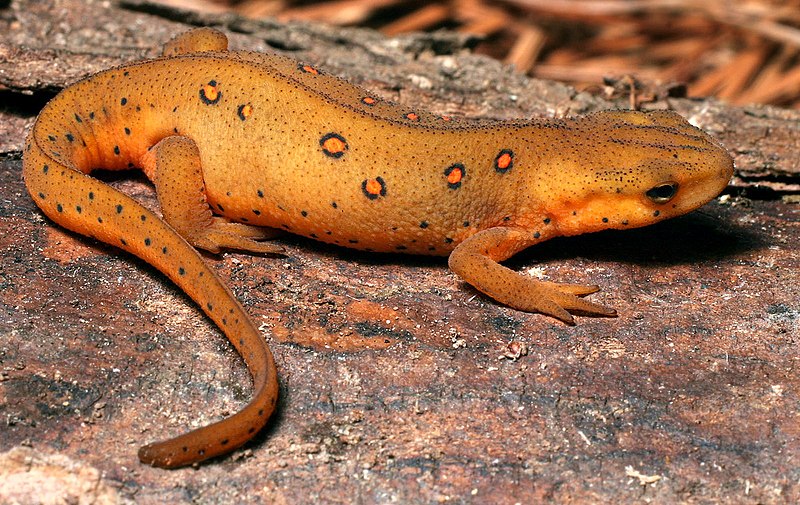Earthworms are one of the most nutritious food items available for amphibians, and for those reptiles, invertebrates and fishes that will take them. Collecting them (in one piece!) can, however, be frustrating, and they are quite costly at bait stores. One trick I stumbled upon years ago has greatly simplified the task of supplying my collection with earthworms – I hope you find it useful. Read More »
Category Archives: Reptile and Amphibian Health
Feed SubscriptionFungal Infections (Mycotic Disease) in Reptiles – Part 2
 The dangers posed by fungal infections are well-known to amphibian and fish keepers. A number of fungi also attack reptiles, but many have proven difficult to detect and treat. In Part 1 of this article I discussed how stress predisposes reptiles to attack and fungal infections in desert-adapted reptiles.
The dangers posed by fungal infections are well-known to amphibian and fish keepers. A number of fungi also attack reptiles, but many have proven difficult to detect and treat. In Part 1 of this article I discussed how stress predisposes reptiles to attack and fungal infections in desert-adapted reptiles.
Rainforest Reptiles
Reptiles adapted to rainforests and other humid environments are not immune to fungal attack, despite the fact that fungi are common in their natural habitats. Problems were first noted in Green Tree Pythons housed in enclosures that allowed for little air circulation. Subsequently, we learned that these snakes must have humidity as well as air circulation if they are to remain free of respiratory infections. I have found the same to hold true for Green Tree Boas, among others. Read More »
Frog Diets – Nutritious Foods for Popularly-Kept Frogs and Toads – Part 1
 Many frogs and toads that are collected or purchased and kept as pets will greedily accept crickets and mealworms, the food items most easily obtained from pet stores. Most thrive on this fare for a time, but eventually develop nutritional disorders and expire long before they have reached their potential life-span. Following are some useful tips for those keeping American Bullfrogs, White’s Treefrogs, Budgett’s Frogs, most Toads and similar species. Please see my other Amphibian Care Articles for information on feeding Poison Frogs, Mantellas, African Clawed Frogs, Horned Frogs and others requiring specialized diets, or write in with your questions. Read More »
Many frogs and toads that are collected or purchased and kept as pets will greedily accept crickets and mealworms, the food items most easily obtained from pet stores. Most thrive on this fare for a time, but eventually develop nutritional disorders and expire long before they have reached their potential life-span. Following are some useful tips for those keeping American Bullfrogs, White’s Treefrogs, Budgett’s Frogs, most Toads and similar species. Please see my other Amphibian Care Articles for information on feeding Poison Frogs, Mantellas, African Clawed Frogs, Horned Frogs and others requiring specialized diets, or write in with your questions. Read More »
The Eastern Newt – the Many Subspecies and Hybrids of a Poplar Pet – Part 1
 The Eastern Newt (Notophthalmus viridescens) is, in most parts of the USA, the salamander most likely to be encountered in either the wild or in pet stores. It is a wonderful species for beginning hobbyists, yet has such a complicated life style that even long-experienced herpetologists remain interested in keeping them.
The Eastern Newt (Notophthalmus viridescens) is, in most parts of the USA, the salamander most likely to be encountered in either the wild or in pet stores. It is a wonderful species for beginning hobbyists, yet has such a complicated life style that even long-experienced herpetologists remain interested in keeping them.
Many unusual hybrids, varying color phases and related species have found their way into captivity. Today I’ll touch on their care and feeding; I’ll discuss some of the many types available in Part 2. Read More »
The Natural History and Captive Care of Softshell Turtles – Part 2
The world’s 24 species of Softshell Turtles (Family Trionychidae) depart radically from the typical turtle body plan, and their behavior holds many surprises for those familiar with “normal” turtles. In Part 1 of this article we looked at their natural history and diet, and discussed the basics of captive care. I also relayed some of the difficulties inherent in working with these delicate creatures – difficulties that resulted in the loss of some huge and rare individuals of several species. I hope you enjoy the following Softshell observations and stories. Read More »
 That Reptile Blog – Reptile, Amphibian and Exotic Pet Care and Information
That Reptile Blog – Reptile, Amphibian and Exotic Pet Care and Information
